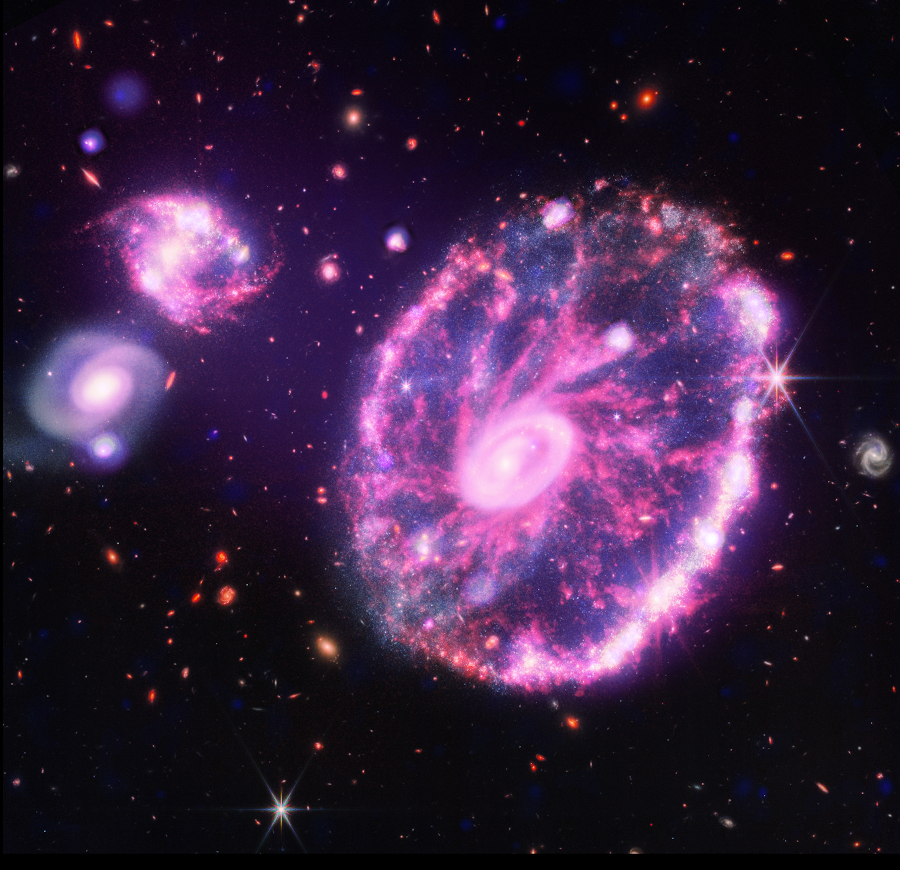
 Credit: X-ray: NASA/CXC/SAO; IR (Spitzer): NASA/JPL-Caltech; IR (Webb): NASA/ESA/CSA/STScI
Credit: X-ray: NASA/CXC/SAO; IR (Spitzer): NASA/JPL-Caltech; IR (Webb): NASA/ESA/CSA/STScI
Doing Cartwheels
The Universe can be a fairly crowded place if you're a galaxy. Galaxies like to cluster with other galaxies, which means that a neighboring galaxy may not be too far away. This proximity, and the mutual gravitational attraction one galaxy feels for another, mean that collisions between galaxies are fairly common, and one of the normal ways in which galaxies grow and change. The image above shows the Cartwheel galaxy, perhaps the most famous result of a galaxy collision. The Cartwheel started out as a mundane spiral galaxy similar to the Milky Way, but, a hundred million years ago or so, a smaller galaxy hit it near dead center. This collision createed an enormous circular shock which rippled outwards from the point of collision, compressing gas in its wake and sparking a ring of stellar birth at the outer edges of the galaxy. The image above is composite of an X-ray image (in purple) from NASA's Chandra X-ray Observatory and a cool infrared image from NASA's brand new James Webb Space Telescope. The X-ray image highlights the hot shocked gas produced by the long-ago collision, some of which has splashed more that 150,000 light years from the galaxy. The infrared image highlights the emission from starburst regions in the Cartwheel. The images also show unrelated galaxies, some of which are also X-ray sources, along with X-ray sources invisible to JWST.
Published: October 24, 2022
<
HEA Dictionary ● Archive
● Search HEAPOW
● Other Languages
● HEAPOW on Facebook
● Download all Images
● Education ● HEAD
>

Each week the HEASARC
brings you new, exciting and beautiful images from X-ray and Gamma ray
astronomy. Check back each week and be sure to check out the HEAPOW archive!
Page Author: Dr. Michael F. Corcoran
Last modified Tuesday, 27-Feb-2024 10:06:36 EST


